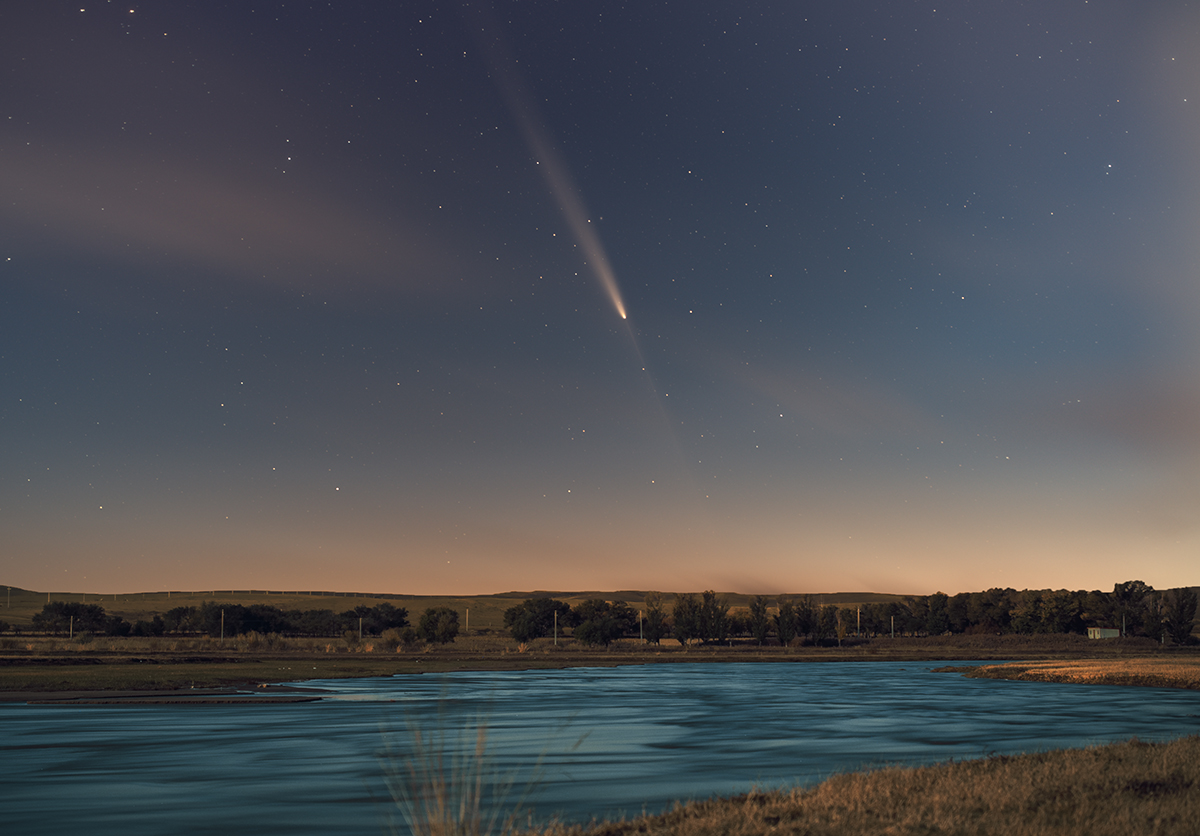A comet’s ghost tail

(Photo by Binyu Wang, courtesy of AAPT.)

If you looked up at the night sky in fall 2024, you may have seen comet C/2023 A3. This image of it was taken by Binyu Wang, a student at Anhui Jieshou No. 1 Middle School in Jieshou, China. He and his teacher Li Shen won first place in the Natural category of the 2025 American Association of Physics Teachers’ High School Physics Photo Contest. Their caption, lightly edited, is below.
C/2023 A3 (Tsuchinshan–ATLAS) is one of the greatest comets in recent years and was discovered by the Tsuchinshan Observatory in China and ATLAS in South Africa. The comet peaked in brightness around 9 October 2024, shortly after passing perihelion on 27 September, and could easily be seen by the naked eye. So I rushed to go to Inner Mongolia, where you can find one of the greatest dark-sky conditions in China, to capture such an amazing astronomy phenomenon. Then I was shocked when the comet appeared out of the twilight in the western sky. When I looked through the camera screen to see the long-exposure single image of the comet, I found something much more incredible! The comet not only showed a bright tail but also a distinct, faint, downward or Sun-directed tail pointing in nearly the opposite direction, which is called the anti-tail. That is because Earth was crossing the comet’s orbital plane, where the comet left its dust that reflected sunlight, which means it is an optical illusion. After my initial excitement, I began trying to just enjoy this beautiful scene: The huge comet hung on the sky, while the moonlight bathed the grassland and river. As the comet faded beyond the edge of the horizon, it was time to say goodbye to Comet Tsuchinshan–ATLAS. Perhaps you’ll vanish like the river water—flow away and never return.





